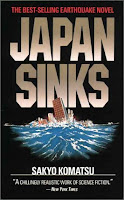It’s the last full week in June, which means its time for another manga giveaway here at Experiments in Manga. Thanks to the good folks at Kodansha Comics, I actually have two volumes of manga to give away this month: the first volume in Hinoki Kino’s No. 6 and the fifth and most recent volume of Hajime Isayama’s Attack on Titan to be released in English! One lucky winner will receive both volumes of manga. And, as always, the contest is open worldwide.
I first started reading dystopian fiction when I was in high school. I’ve never grown out of dystopias and I continue enjoy reading about them. While at the moment the young adult market in particular is fairly inundated with dystopian literature, there are relatively few manga that have been licensed in English that deal with dystopian themes. But just this month, Kodansha Comics released the first volume in No. 6 which is a excellent example of a classic dystopia—a seemingly perfect, highly controlled society with a darker side and hidden costs. Attack on Titan is a dystopia of a different sort—a world in which humanity struggles to survive against forces beyond its control. It may not be a dystopia in the strictest sense and may actually share more in common with post-apocalyptic fiction (its difficult to tell from only the first five volumes), but I’d argue that there’s often significant overlap between the two subgenres.
So, you may be wondering, how can you win a copy of No. 6, Volume 1 and Attack on Titan, Volume 5?
1) In the comments below, tell me which of the two series—No. 6 and Attack on Titan—interests you the most and why. (If you win, you’ll still be getting both volumes regardless of your response.)
2) For a second entry, simply name a dystopian manga that hasn’t been mentioned yet by me or by someone else.
3) If you’re on Twitter, you can earn a bonus entry by tweeting about the contest. Make sure to include a link to this post and @PhoenixTerran (that’s me).
So there you have it! Each person can earn up to three entries for this giveaway and has one week to submit them. If you have trouble leaving comments, or if you would prefer, you can e-mail me your entry at phoenixterran(at)gmail(dot)com and I will post the comment in your name. The winner will be randomly selected and announced on July 3, 2013. Good luck to you all!
VERY IMPORTANT: Include some way that I can contact you. This can be an e-mail address, link to your website, Twitter username, or whatever. If I can’t figure out how to get a hold of you and you win, I’ll just draw another name.
Contest winner announced—Manga Giveaway: Dystopian Duo Winner








